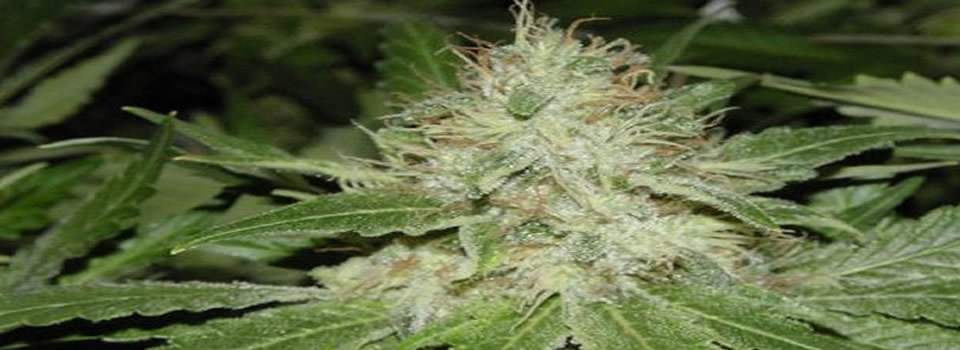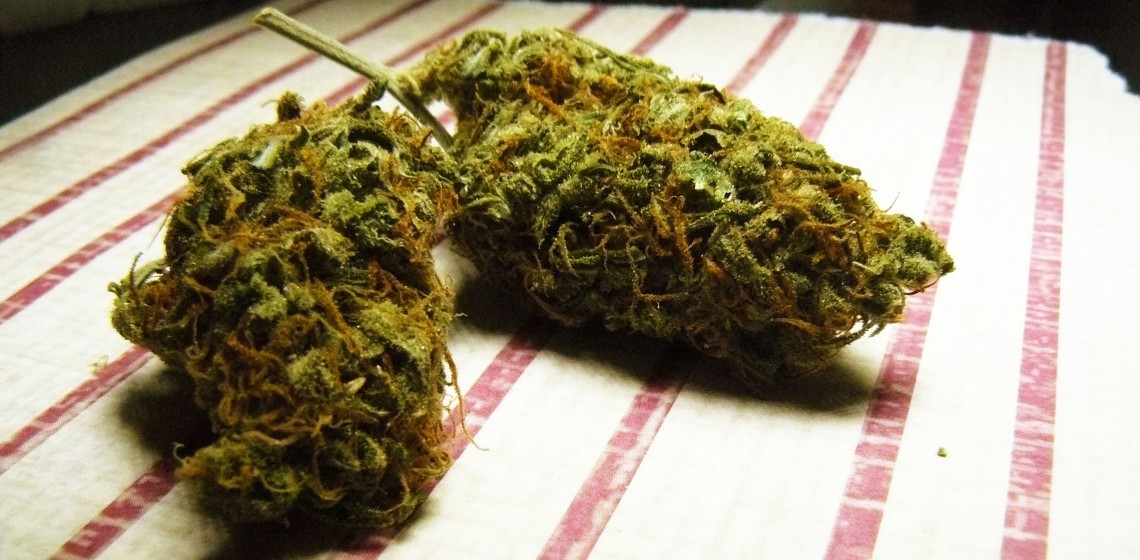Cannabis Compound Found to Remove Toxic Alzheimer's Protein From the Brain
 Alzheimer's is a major problem, and as Americans continue to age, it's becoming an increasing one. But what if cannabis had the answer?
Alzheimer's is a major problem, and as Americans continue to age, it's becoming an increasing one. But what if cannabis had the answer?
According to Real Farmacy, cannabis is the answer - as a compound (THC, more specifically) can remove toxic amyloid beta protein clumps, which some believe are responsible for Alzheimer's disease, from the brain.
Marijuana enthusiasts the world over are already rejoicing, simply because they heard THC. Smoke 'em if you got 'em?
Researchers are suggesting that THC works to fight Alzheimer's by clearing those protein clumps, thereby decreasing the likelihood of the lesions some researchers believe are responsible for Alzheimer's.
In 2006, researchers at the Scripps Research Institute found that THC inhibits the formation of amyloid plaques by blocking the enzyme in the brain that produces them. Schubert and his team have found that THC is also able to eliminate a dangerous inflammatory response from the nerve cells, thus ensuring their survival.
So far, Schubert and his team have only tested THC on neurons in a lab. Their next step will be to observe the link between THC and reduced inflammation and plaque build-up in a clinical trial.
THC is a popular word among marijuana enthusiasts because it is responsible for the majority of marijuana’s psychological effects, including the high. THC has natural pain-relieving properties, and is effective in treating symptoms for everything from stroke and chemotherapy to chronic pain, post traumatic stress disorder, and HIV.
When consumed, THC passes from the lungs to the bloodstream, and attaches itself to two different types of receptors, cannabinoid receptor (CB) 1 and 2. These receptors are found on cell surfaces all over the body.
Receptors in the brain are most concentrated in neurons associated with pleasure, memory, thinking, coordination, and time perception. These receptors usually bind with a class of lipid molecules called endocannabinoids that are produced by the body during physical activity to promote cell-to-cell signaling in the brain.
THC can also bind to these lipid molecules in the same way. When THC does this, it begins to mess with the brain’s ability to communicate with itself. This can be both a good and a bad thing.
Research suggests that by binding to these receptors, THC could actually have a positive effect on aging brains because it can help the body clear out toxic accumulations of amyloid beta.
While no one is 100% sure of what causes Alzheimer’s disease, it is thought to be the result of a build-up of two types of lesions: amyloid plaques and neurofibrillary tangles.
Amyloid plaques are dense clusters of beta-amyloid molecules that sit between neurons. Neurofibrillary tangles are caused by defective tau proteins that clump up into a thick, insoluble mass in the neurons.
It is still unclear why these lesions begin appearing in the brain, but studies have linked inflammation in the brain tissue to the build up of plaques and neurofibrillary tangles. According to these studies, something that is capable of easing brain inflammation while simultaneously encouraging the body to clear out these lesions could become the first effective treatment for Alzheimer’s.
In 2006, researchers at the Scripps Research Institute found that THC inhibits the formation of amyloid plaques by blocking the enzyme in the brain that produces them. Schubert and his team have found that THC is also able to eliminate a dangerous inflammatory response from the nerve cells, thus ensuring their survival.
So far, Schubert and his team have only tested THC on neurons in a lab. Their next step will be to observe the link between THC and reduced inflammation and plaque build-up in a clinical trial.
THC is a popular word among marijuana enthusiasts because it is responsible for the majority of marijuana’s psychological effects, including the high. THC has natural pain-relieving properties, and is effective in treating symptoms for everything from stroke and chemotherapy to chronic pain, post traumatic stress disorder, and HIV.
When consumed, THC passes from the lungs to the bloodstream, and attaches itself to two different types of receptors, cannabinoid receptor (CB) 1 and 2. These receptors are found on cell surfaces all over the body.
Receptors in the brain are most concentrated in neurons associated with pleasure, memory, thinking, coordination, and time perception. These receptors usually bind with a class of lipid molecules called endocannabinoids that are produced by the body during physical activity to promote cell-to-cell signaling in the brain.
THC can also bind to these lipid molecules in the same way. When THC does this, it begins to mess with the brain’s ability to communicate with itself. This can be both a good and a bad thing.
Research suggests that by binding to these receptors, THC could actually have a positive effect on aging brains because it can help the body clear out toxic accumulations of amyloid beta.
While no one is 100% sure of what causes Alzheimer’s disease, it is thought to be the result of a build-up of two types of lesions: amyloid plaques and neurofibrillary tangles.
Amyloid plaques are dense clusters of beta-amyloid molecules that sit between neurons. Neurofibrillary tangles are caused by defective tau proteins that clump up into a thick, insoluble mass in the neurons.
It is still unclear why these lesions begin appearing in the brain, but studies have linked inflammation in the brain tissue to the build up of plaques and neurofibrillary tangles. According to these studies, something that is capable of easing brain inflammation while simultaneously encouraging the body to clear out these lesions could become the first effective treatment for Alzheimer’s.
Bron: organicandhealthy.org/
2024 De Goed Nieuws Krant

